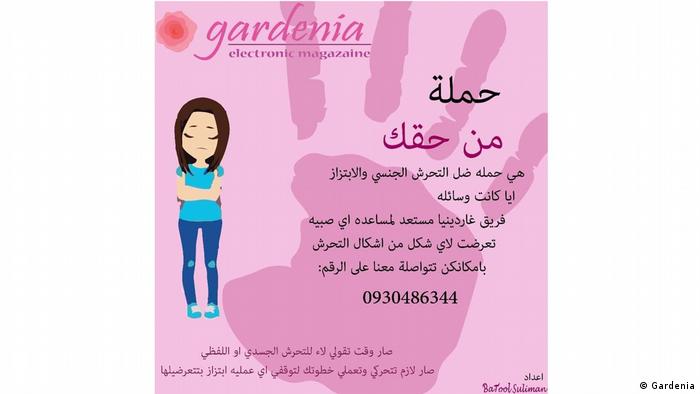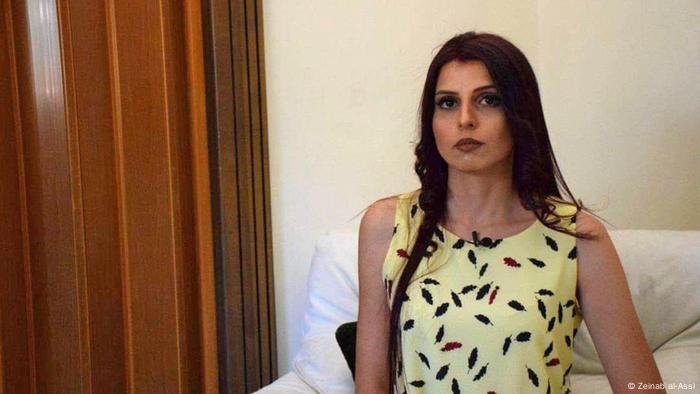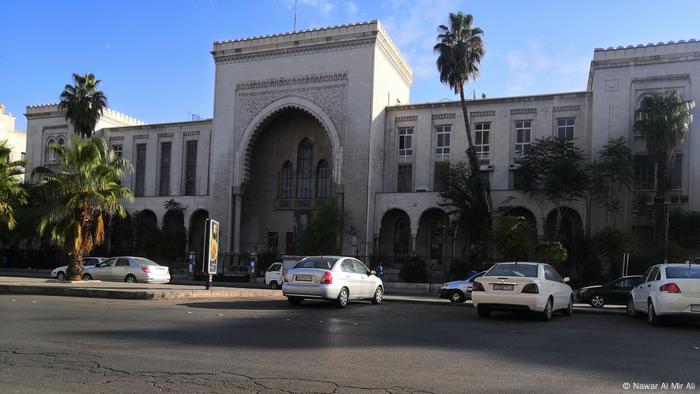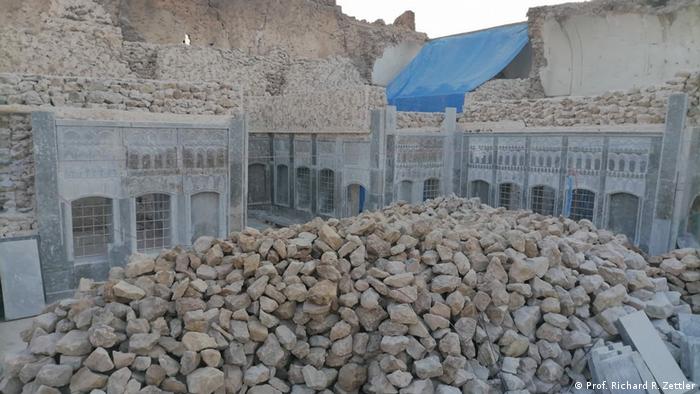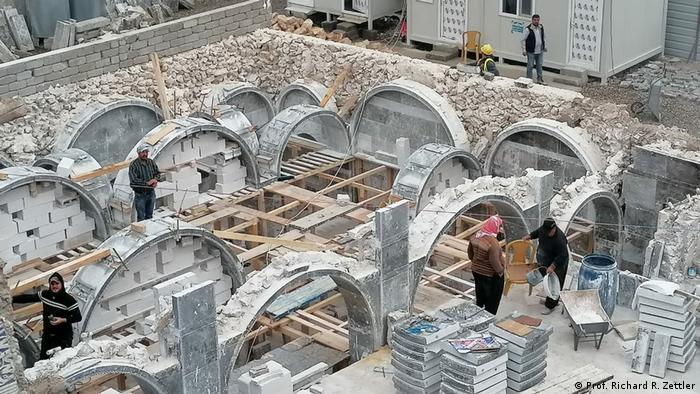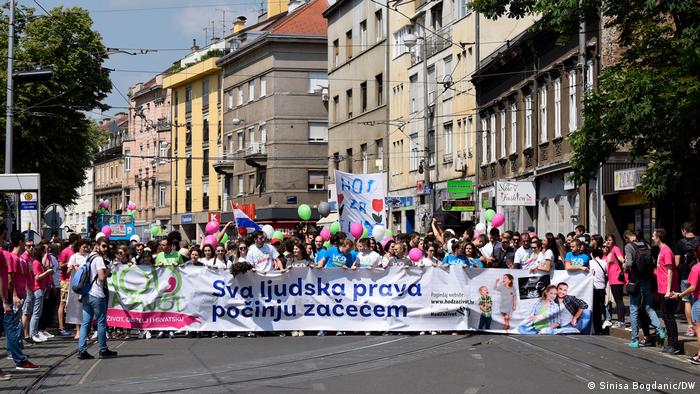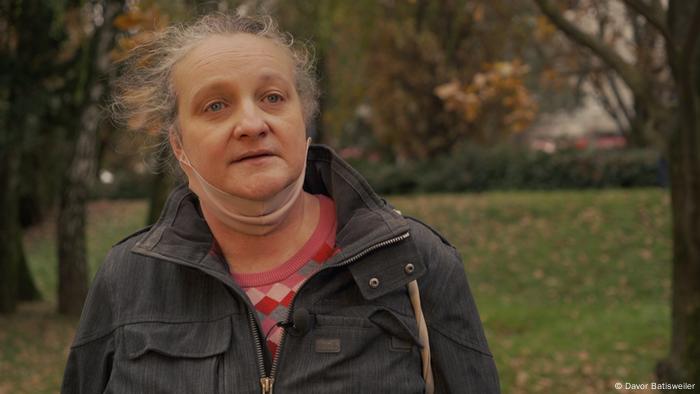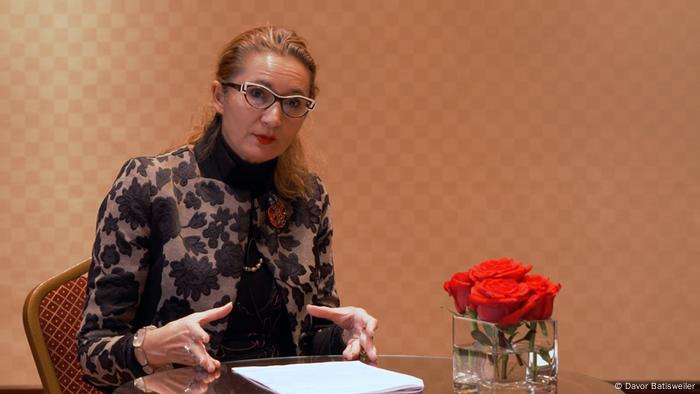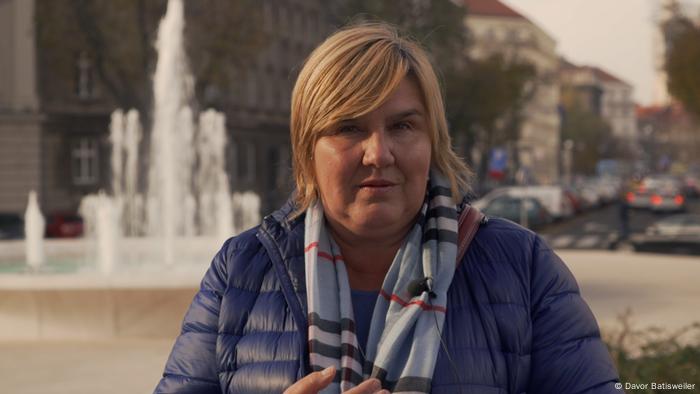SPORTS
Hooligans in 2020: How 'militant neo-Nazis' have spearheaded coronavirus protests
At anti-lockdown protests, hooligans have provided the muscle to break through police lines. They may have their roots in football, but they're now more likely to be found practicing combat sports than on the terraces.

With football matches in Germany taking place behind closed doors since March, many football supporters have found different ways to spend their time. Some have launched initiatives to support vulnerable members of their communities; others have helped develop concepts for financial reform.
But one element has found an alternative pastime, with football hooligans latching on to the "Querdenker" – the so-called lateral-thinkers — who protest government measures to combat the spread of the coronavirus. When a Querdenker demonstration spiraled out of control in Leipzig on November 7, football hooligans were at the forefront.
After police had officially ended the demonstration because attendees failed to maintain social distancing or wear face coverings, hooligans fought police using weapons, pepper spray, pyrotechnics and their fists. The police gave way, and the demonstrators were free to march around the ring road that encircles Leipzig's city center.
It wasn't the first time that football hooligans have acted as the catalyst for politically motivated violence in recent years. In Chemnitz in 2018, far-right hooligans led violent protests following a fatal stabbing in the city. And ahead of the next planned Querdenker event in Dresden in December, images circulated on extreme-right social media channels calling on "Hooligans, Nationalists and Ultras" to gather in the Saxony state capital.
'Militant neo-Nazis'
The Dresden event was ultimately forbidden by the authorities, but who exactly are the hooligans and what have they got to do with measures to slow the spread of the coronavirus?
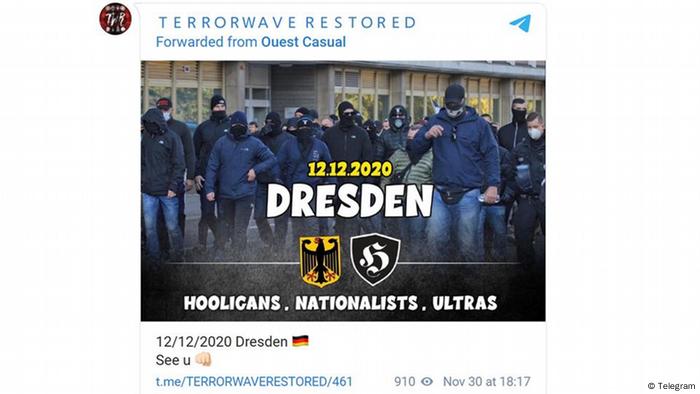
A call for far-right hooligans to attend a Querdenken event shows suspected members of Leipzig's neo-Nazi hooligan scene at the protest there on November 7
"These hooligans are militant neo-Nazis who provide the muscle for these marches," said Robert Claus, a researcher and author who specializes in right-wing extremism, and who witnessed the events in Leipzig firsthand. "They don't write the speeches, they don't man the info stands: They're there to help the demonstrators break through the police lines."
Claus estimates that as many as 400 hooligans were present in Leipzig, many wearing insignia linking them to various German football clubs. But, more important than their alleged footballing allegiances, according to Claus, are the combat-sports gyms in which the hooligans train.
"When we talk about 'hooligans,' people often think we're talking about football fans, but I don't think that is so important here," Claus said. "What we're talking about is a very specific crossover between militant neo-Nazis and the hooligan scene.
"People take part in combat sports for all sorts of reasons: sport, weight loss, letting off aggression, fitness. But, for militant neo-Nazis, it's about training for political violence and street battles. That is what we saw in Leipzig: several hundred well-organized, well-trained experienced fighters."
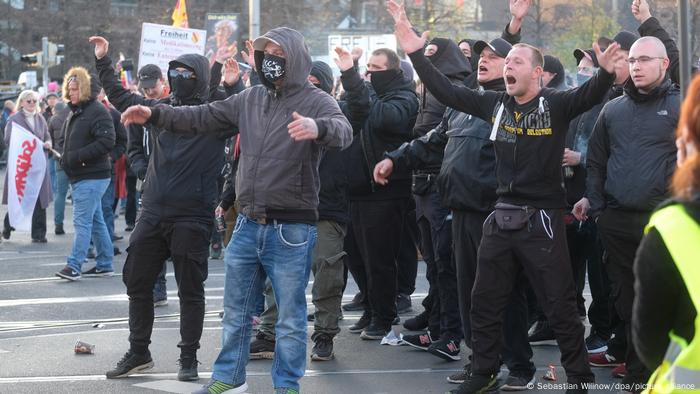
Protesters on Leipzig's Augustusplatz
From the terraces to the ring
Among the hooligans present in Leipzig, for instance, were suspected members of the Imperium Fight Team, a mixed martial arts (MMA) team and gym that acts as a networking point for the Leipzig neo-Nazi scene. IFT members are accused of being involved in a neo-Nazi attack on the left-wing alternative Leipzig suburb of Connewitz in 2016, and one member is accused of a racially motivated assault on a bouncer outside a Mallorca nightclub in 2019.
"There is a well-established fascist combat sports scene in Germany and Europe, with its own events and fashion labels," a spokesperson for Runter von der Matte (Down off the Mat, or RvdM), an initiative that seeks to raise awareness of the issue of far-right extremism in combat sports, said in a statement to DW.
"For years now, neo-Nazis have been organizing in professional structures and holding their own combat sport events at which they can recruit people to their cause," according to the statement.
According to RvdM, it is more important than ever that gyms, sports clubs and federations take a clear stance when it comes to racism and fascism.
"Combat sports take place in a social arena in which young people develop their values," according to RvdM. "The federations therefore have a responsibility to explain why racism and other inhuman ideologies have no place in the ring, and to take an active part in the discussion."
The German Mixed Martial Arts Federation, which regulates the sport, distances itself from extremism and discrimination and insists that extremists make up only a small fraction of those who practice the sport.

The federation works with the Vollkontakt: Demokratie und Kampfsport(Full Contact: Democracy and Combat Sports) project to identify and battle the development of extremist ideologies in the sport, and bars athletes who have expressed extremist views from its events. But it nevertheless recognizes that combat sports hold a certain attraction for right-wing extremists.
"We are, of course, appalled that there are people who misuse martial arts, but the abuse of martial arts and the values associated with them can unfortunately not always be completely ruled out," a spokesperson said in a statement to DW.
"The use of violence is a fundamental element of extremist world views and martial arts and their use outside of sport are therefore of interest to such people," according to the statement.
Neo-Nazis and Querdenker
Though the attraction of combat sports for militant Neo-Nazi hooligans may be clear, it is less apparent for some of the other participants in Querdenker protests. However, the researcher Claus said, there may be a greater overlap than first meets the eye.
"Right-wing extremists dream of the collapse of liberal democracy," he said. "However, they know that they can't achieve that on their own, so they latch on to movements that share their social Darwinist ideology. They try to further radicalize those movements and encourage social conflict in order to bring about a situation in which the state is no longer able to protect minorities."
That, essentially, is what happened in Leipzig in November. The police were criticized for retreating in the face of the hooligans. Should the authorities have been better prepared?
"Hooligans have been taking part in these protests since August, and it was predictable from social media that they would be coming together again in Leipzig," Claus said. "You could see them from early in the day, and you could identify them. But the police didn't take any strategic measures to kettle them."
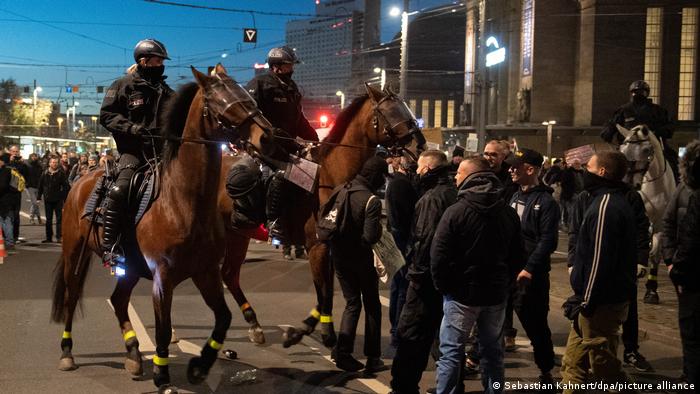
Officers faced off against protesters in Leipzig
Paradox for police
The authorities face a difficult balancing act. They are dealing with a movement that takes advantage of basic civil rights such as freedom of assembly and expression in order to attack the very system that guarantees those rights, accusing it of taking them away.
"These demonstrations represent a new type of gathering, which poses new challenges," said Jörg Radek, the acting chairman of the GdP police union, in a recent interview with the German media industry magazine Journalist.
"The police could probably have prevented the breakthrough in Leipzig had they formed three lines, but what sort of image would that have produced, on the very spot where people revolted against a dictatorship 31 years ago?" Radek said. "Those images would have been used to portray the police as bailiffs of a health dictatorship."
Radek did add, however, that the police are "capable of learning" — and so it seemed when the next Querdenker demonstration in Dresden on December 12 was officially prohibited.
Police nevertheless made 72 arrests and issued more than 160 orders to leave the city, and almost 300 people have been charged with summary offenses. Among them are known football hooligans who attempted to travel to Dresden by train.
Militant neo-Nazis may have their roots in football hooliganism, but their activities are no longer limited to the terraces. They can now be found in combat sports studios, training professionally for violent political conflict, and spearheading political protests on the streets.

